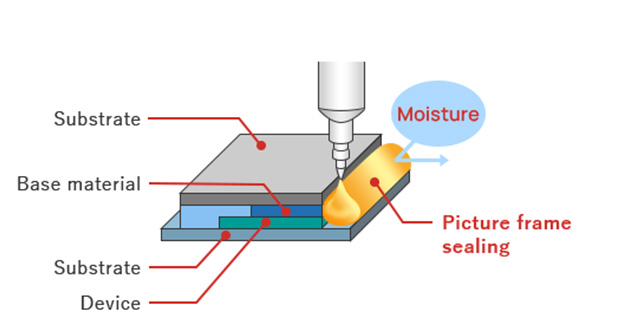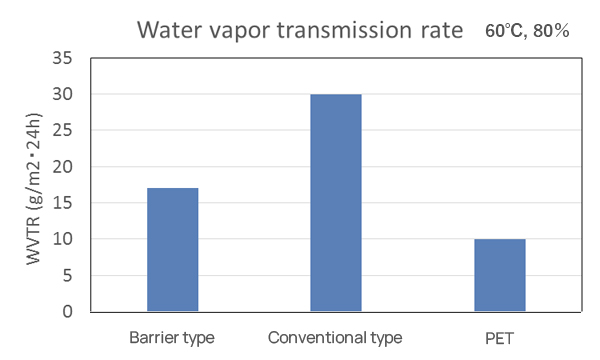PLENSETTM
PLENSETTM
Gas barrier type
In-page Navigation

In addition to bonding, it also has an encapsulation function.
Through our proprietary formulation technology, we have achieved a composition that prevents the penetration of water vapor and other gaseous components, which helps maintain the performance of products to which it is applied.
Have you experienced these issues?
Easily encapsulating moisture-sensitive devices
case
01
Filling internal parts with gas and encapsulating
case
02
Need materials with high moisture-proof sealing capabilities
case
03
Here is the product that resolves these issues. PLENSETTM Gas barrier type
Adhesives with gas barrier properties

Protect the device from moisture and other gases
Picture frame sealing to protect the device from moisture
Feature
#1
Assembly and encapsulation of devices that require protection from moisture and other gases.
Feature
#2
Examples and Applications
Picture frame sealing of devices
Hermetic sealing of vents and through-holes
Comparison with conventional products


Characteristics
| Item | AES-110 | AES -210 | Conditions | ||
|---|---|---|---|---|---|
| Characteristics | Color tone and appearance | Pale yellow viscous liquid | Black viscous liquid | Visual inspection | |
| Viscosity | 7Pa・s | 9.8Pa・s | E-type viscometer 25degC,50rpm | ||
| Thixotropic index | 1.2 | 1.2 | E-type viscometer 25degC,5rpm/50rpm | ||
| Standard curing conditions | 70degC×60minutes | 90degC×60minutes | Hot air circulation oven | ||
| Properties of cured materials | Tensile lap shear strength | 13N/㎟ | 26N/㎟ | JIS K-685 (Steel plate) | |
| Glass transition temperature | 62degC | 100degC | TMA measurement | ||
| Thermal expansion coefficient | α1 | 40ppm | 72ppm | ||
| α2 | 136ppm | 117ppm | |||
| Water-vapor transmission ratio | 18-22g/m2・24h | 14-20g/m2・24h | 60degC, 80% JIS Z-0208 | ||
The data in this document are representative values, not standard values. The contents of this document are subject to change without notice.
Application process
Telephone or form inquiry
Inquire about customer issues, required characteristics
Propose and send samples for evaluation
Customer evaluation
Interview regarding results of evaluation
When it is difficult to use existing products
Consultation and consideration of development themes
















